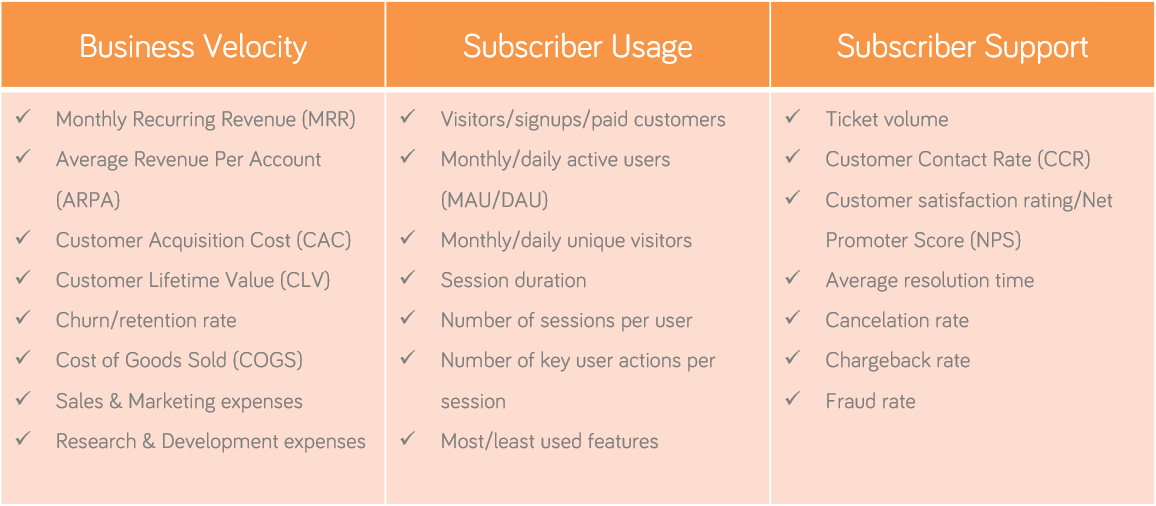Powerful subscription metrics support your business strategy. They answer questions like:
- What attracts and converts new users into subscribers?
- Are your subscribers engaged for the long-term?
- What’s your monthly/annual recurring revenue – and how can you increase it?
- How can you penetrate new markets and reach new customers?
Financial and revenue metrics are the responsibility of your Finance team — trust us, they love that stuff. But the role of your Finance team is changing. In today’s subscription economy, the Finance team is no longer just the cost accountant. They’re now the business value architect, and they have the power to drive growth and profitability for your entire business.
What does that mean for your metrics and reporting strategy? Well, it means that instead of relying on a strategy that simply lets your intrepid team of number crunchers measure growth and profitability, you need one that will enable them to help drive it across all functions within your organization.
This blog entry is the first in a two-part series on metrics and reporting tips for subscription businesses. In this series, we’ll cover how to use specific metrics and subscriber roles to understand how existing business potentially impacts future revenue as well as subscription processes across your organization. Today, let’s discuss how to measure value with metrics.
Measuring Value With Metrics
You can define your own metrics based on what matters to your business. But luckily, there are some standard value metrics that every subscription business should be monitoring, so you don’t need to start from scratch.
We’ve classified these value metrics into three categories: Business Velocity, Subscriber Usage and Subscriber Support.
Business Velocity Metrics
What they tell you: Is my business profitable and operating efficiently?
How to use them: To increase the efficiency, quality and consistency of your business operations; to invest in the right technology, projects and personnel; to expand into new global markets
Subscriber Usage Metrics
What they tell you: How do my users navigate and engage with my offering?
How to use them: To uncover unique opportunities for optimization; to discover new and unexpected use cases and user segments; to define subscriber identities
Subscriber Support Metrics
What they tell you: Is my customer’s experience with my product/service a positive one?
How to use them: To improve your checkout flow; to optimize your offering’s UI/UX; to decide which features to add or remove; to make your purchase process more secure
Value Metrics Don’t Live in a Vacuum
And they shouldn’t be confined to your Finance team. Instead, metrics should be owned jointly across all departments within your organization. Your CEO, CIO, CTO, CMO, VP of Sales and all other key stakeholders must be held accountable for transparently providing and contextualizing analytics on all business activities they own.
In the next post in this series, we’ll discuss subscriber identities and roles — how to build accurate and up-to-date subscriber records, and how to subsequently define and apply subscriber roles that will help you identify important trends in behavioral, financial and demographic data.
